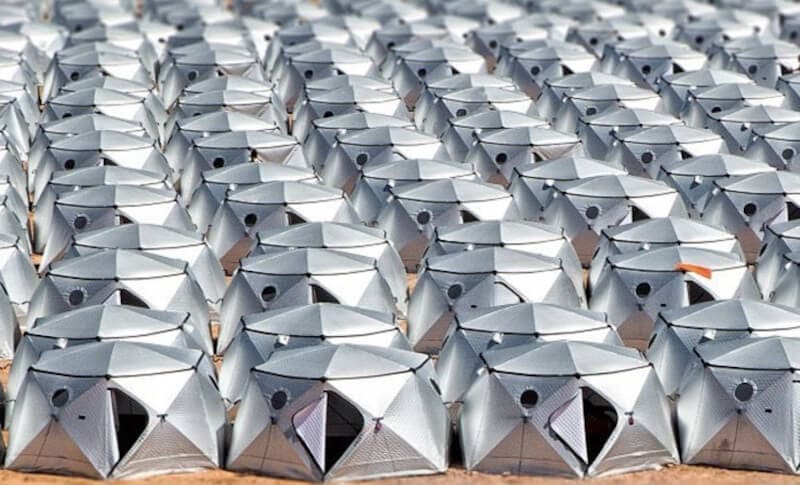Home Away from Home: Emergency Shelters, Temporary Sheltering
In the wake of disasters, crises, or natural catastrophes, the provision of prompt shelter for impacted individuals is of paramount importance. Emergency shelters are purposed to offer a transient sanctuary for those who are homeless or displaced due to unexpected events.
Emergency Shelters, Relief For Displaced Persons
Emergency shelters provide a safe and secure place for individuals or families affected by emergencies to stay temporarily. These refuges provide instant aid to those left homeless or displaced as a result of natural calamities such as hurricanes, earthquakes, floods, or wildfires, as well as other crises including wars, societal disturbances, or pandemics.
During an emergency, access to shelter is one of the most pressing needs of those affected. Emergency shelters offer a hospitable environment for rest and dwelling, where fundamental needs like sustenance, hydration, and medical care are readily accessible.
Emergency Shelters, Summer, Winter, Portable, Inflatable Shelter
Emergency shelters manifest in various forms and scales, each tailored for a distinct purpose or circumstance. Among the prevalent kinds of emergency shelters are collapsible shelters, which are engineered to be swiftly assembled and disassembled. Owing to their light weight and compact packed form, these shelters are highly portable.
Collapsible Shelters: Inflatable shelters use air to create a sturdy structure. These shelters are constructed from resilient materials and are built to endure severe weather circumstances. Inflatable shelters can be easily transported and are ideal for use in disaster zones.
Inflatable Shelters: Portable shelters are designed to be easily transported and set up. Their lightweight structure and capacity to fold into a compact size make them highly convenient for transportation. Portable shelters are ideal for emergencies where quick deployment is required.
Portable Shelters: Biodegradable shelters are made from natural materials and can decompose over time. Biodegradable Shelters: These shelters are constructed from organic substances and are capable of naturally decomposing as time passes.
Biodegradable Shelters: Winter shelters are designed to provide warmth and protection in cold weather conditions. They are made of insulated materials and can withstand harsh winter weather conditions.
Winter Shelters: These shelters are conceived to offer a refuge from solar exposure and deliver protection against the sun's heat. Constructed from light materials, these shelters can be moved around with ease.
Winter Shelters: These shelters are conceived to offer a refuge from solar exposure and deliver protection against the sun's heat. Constructed from light materials, these shelters can be moved around with ease.
Sea Shelters: Sea shelters are designed for use in emergencies at sea. These shelters are crafted from robust materials capable of resisting severe weather conditions, offering substantial protection against environmental factors.
Monsoon Shelters: Monsoon shelters are designed to withstand heavy rain and wind. They are made of waterproof materials and can be easily transported.
Emergency Shelters vs Temporary Shelters: What Sets Them Apart?
Emergency and temporary shelters both serve as provisional living solutions for individuals who have become homeless or displaced due to natural disasters, crises, or other events. Yet, there are notable distinctions between the two.
Emergency shelters are crafted to offer immediate aid for a brief duration, typically spanning a few days to a few weeks. Their purpose is swift deployment to render momentary lodgings for those impacted by a catastrophe or crisis. They tend to be rudimentary, offering just essential requirements like shelter, basic necessities such as food and water, and medical care.
Conversely, temporary shelters are designed with a longer-term perspective in mind, meant to accommodate individuals who have lost their homes or have been displaced for a more substantial period. They are more comprehensive in nature, providing not just basic amenities but also amenities like kitchens, bathrooms, and bedrooms. Depending on the circumstances, temporary shelters can serve as a dwelling for several months or potentially even years.
Another key difference between emergency shelters and temporary shelters is the level of privacy and independence they provide. Emergency shelters typically operate on a communal basis, accommodating large groups of people within a shared space. This differs from temporary shelters, which are designed to offer greater privacy and autonomy for individuals or families.
Temporary Shelters, Manufactured Homes, Tiny Homes, Sustainable Housing
Manufactured homes: Manufactured homes are residences that are constructed at a different location and later transported to their final site. These types of shelters often prove to be more cost-effective than traditional homes and provide the flexibility of customization to meet the unique requirements of a family.
Tiny homes: These small homes are compact, mobile residences designed to deliver cost-effective housing alternatives. Frequently constructed on trailers, they offer the convenience of being transported from one place to another.
Sustainable housing: Sustainable housing refers to a category of dwellings designed with an eco-conscious focus. These residences employ environmentally friendly materials and are architected to reduce their environmental footprint.
Emergency shelters provide displaced person relief for victims who have lost their homes or have been displaced due to natural disasters.



.png)
.png)
.png)

.png)